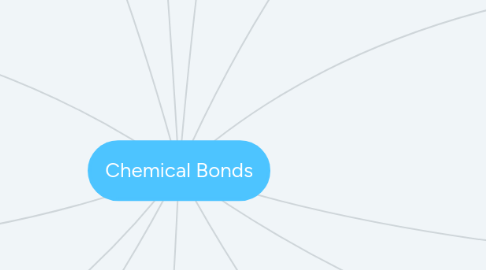
1. Functional Groups
1.1. Formulas for organic compounds may be abbreviated with R or R'
1.2. Organic molecules have two parts:
1.2.1. Carbon backbone
1.2.2. One (or more) functional groups that define physical and chemical properties
2. Halogen compounds:
2.1. Functional group: Halogen (F, Cl, BR, I)
2.2. Generic halogen formula= R-X where X=any halogen atom.
2.3. Most inhaled agents fall into this class, derived from either straight-chain hydrocarbons or ether compounds.
3. Ethers
3.1. Two radical groups joined by oxygen: serves as the functional group.
3.2. R-O-R
3.3. Classic ether anesthetics (ex: diethyl ether) have long been abandoned bc of their explosiveness- replaced with nonexplosive halogenated ethers
3.3.1. Halothane, Isoflurane, Sevoflurane, Desflurane
4. Esters
4.1. Made by interacting an alcohol with an acid.
4.2. Formula: R-COO-R
5. Amides
5.1. Related to carboxylic acids; ex: urea
5.2. Formula: CONH2
5.2.1. Contain Nitrogen
5.3. Form entire class of local anesthesia
6. Amines
6.1. Derives from ammonia (NH3)
6.1.1. Functional group is the nitrogen atom
6.2. Can be divided into primary, secondary, or tertiary depending on how many atoms are replaced by a radical
6.3. Formula: R-NH2
6.4. Physiologically Active Amines
6.4.1. Hormones: made in special glands to serve as chemical messengers
6.4.1.1. proteins or peptides
6.4.1.2. Amines or amino acids
6.4.1.3. Steroids
6.4.2. Sympathomimetic amines:
6.4.2.1. NE
6.4.2.2. Dopamine
6.4.2.3. Phenylephrine
6.4.2.4. Dobutamine
6.4.2.5. Epinephrine
6.4.2.5.1. Methyl substitute at terminal amine that increases Beta1 adrenergic receptor activity (min Beta 2 activity)
6.4.2.5.2. "God's drug"
6.4.2.5.3. R-CH2-NH-CH3
7. Aromatic Compounds
7.1. 6 carbons joined by three double bonds of oscillating electrons
7.2. Most basic configuration is a benzene ring (C6H6) where each carbon has one attached hydrogen.
8. Covalent bond
8.1. Basis for the bonds seen in organic chemistry
8.2. Results from sharing one or more pairs of electrons
9. Carbon
9.1. Has 6 protons and 6 neutrons in its nucleus. Its 6 electrons are distributed per the Theory of Octet as 2-4
9.2. It is the 4 electrons in the atom's outer orbit that provides carbon's distinguishing characteristic, since carbon shares those 4 outer electrons with other atoms, in pairs, through covalent bonds.
9.2.1. Carbon bonds readily with other elements, including other carbon atoms, and in particular with hydrogen which, by sharing its electrons with carbon, assumes the stable configuration of the helium atom.
9.3. Compounds made up mainly of one or more carbon atoms with their respective hydrogen attachments are called hydrocarbons.
10. Hydrocarbon
10.1. Methane:The simplest form of an organic hydrocarbon is the gas methane, which has a single carbon attached to 4 hydrogen atoms.
10.1.1. Stripping one hydrogen leaves a methyl group (CH3)
10.2. Ethane: next most common hydrocarbon. 2 carbons share electron while remaining electrons are paired with hydrogen e-.
10.3. Hydrocarbons are classified by # of atoms:
10.3.1. Propane-3
10.3.2. Butane- 4
10.3.3. Pentane- 5
10.3.4. Hexane- 6
10.3.5. Heptane- 7
10.3.6. Octane- 8
10.3.7. Nonane-9
10.3.8. Decane- 10
11. Methyl Group
11.1. Acts as a radical
11.1.1. Radical- any group of atoms that have bonded together to act like an individual atom in chemical reactions.
11.1.1.1. polyatomic ions= they typically carry a charge
12. Alkane Hydrocarbon series
12.1. Straight chained, single bound compounds.
12.2. Burn readily and react with halogens, esp Bromine and Chlorine
12.2.1. Important to development of halogenated anesthetics (Halothane)
12.3. Alkenes= Double bonds
12.4. Alkyne= Triple bonds
13. Isomers
13.1. Same chemical formula, different bonding, shape, or structure
13.2. Carbon-based compounds facilitate isomer formation bc carbon has unique ability to rotate its bonds around its central axis.
13.3. Two types of Isomers:
13.3.1. Structural Isomers: The two forms usually differ in chemical and physical properties
13.3.2. Stereoisomers: identical formulas but differ in spatial arrangement: Class further divided into:
13.3.2.1. Optical Isomers: occur when groups attach to the carbon atom differ from one another in such a way as to polarize (bend) light.
13.3.2.1.1. Those that bend light to the right: Dextroisomers
13.3.2.1.2. Bend to the left: levoisomers
13.3.2.1.3. both dext and levo mix, so no bending of light occurs, mixture is called "Racemic"
13.3.2.1.4. Form mirror images
13.3.2.2. Geometric Isomers: Occur when compounds contain 2 carbon atoms with a double bond- double bond prevents axial rotation.
13.3.2.2.1. Cis isomer: groups are on same side as double bond
13.3.2.2.2. Trans isomer: groups are on opposite sides of bond.

